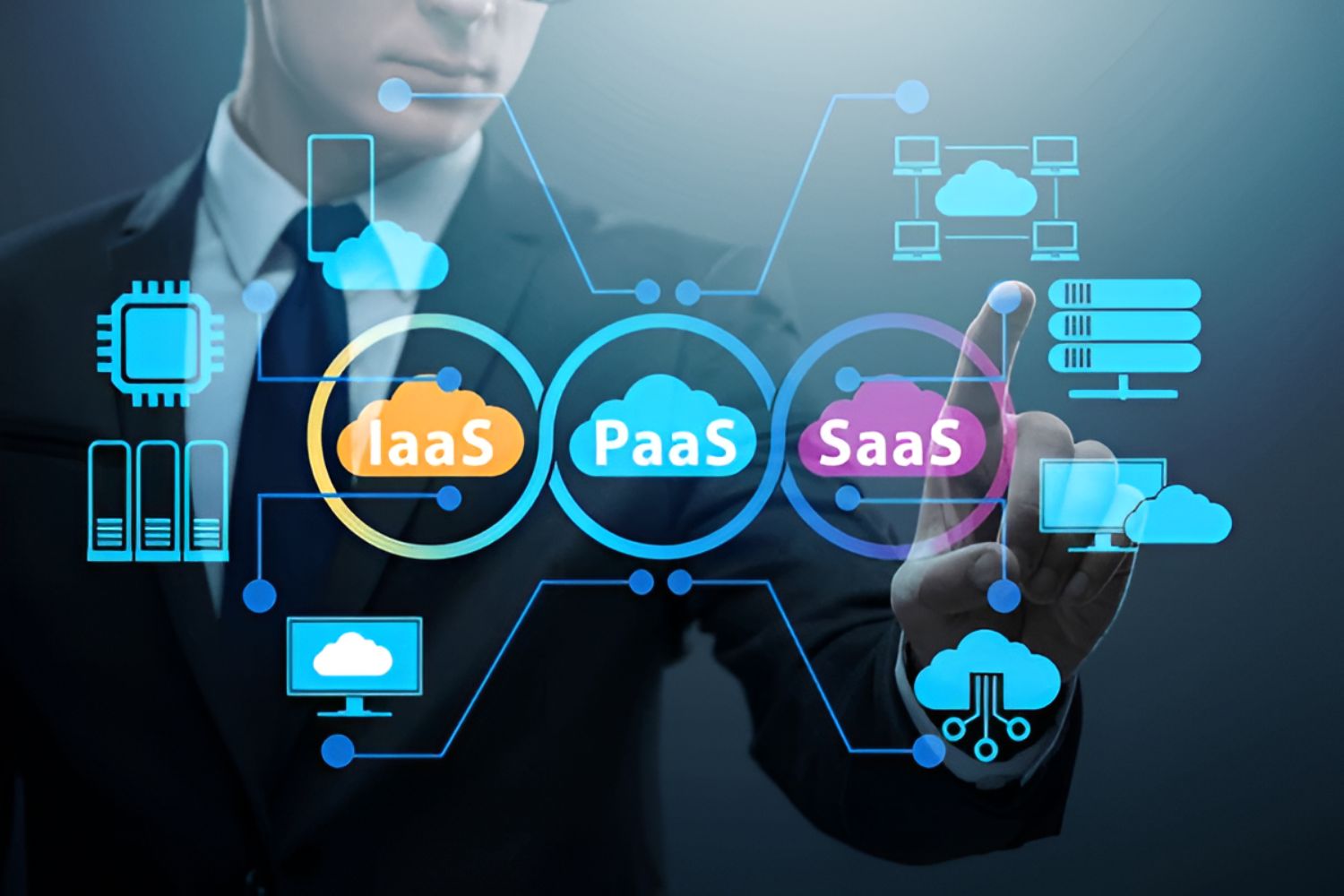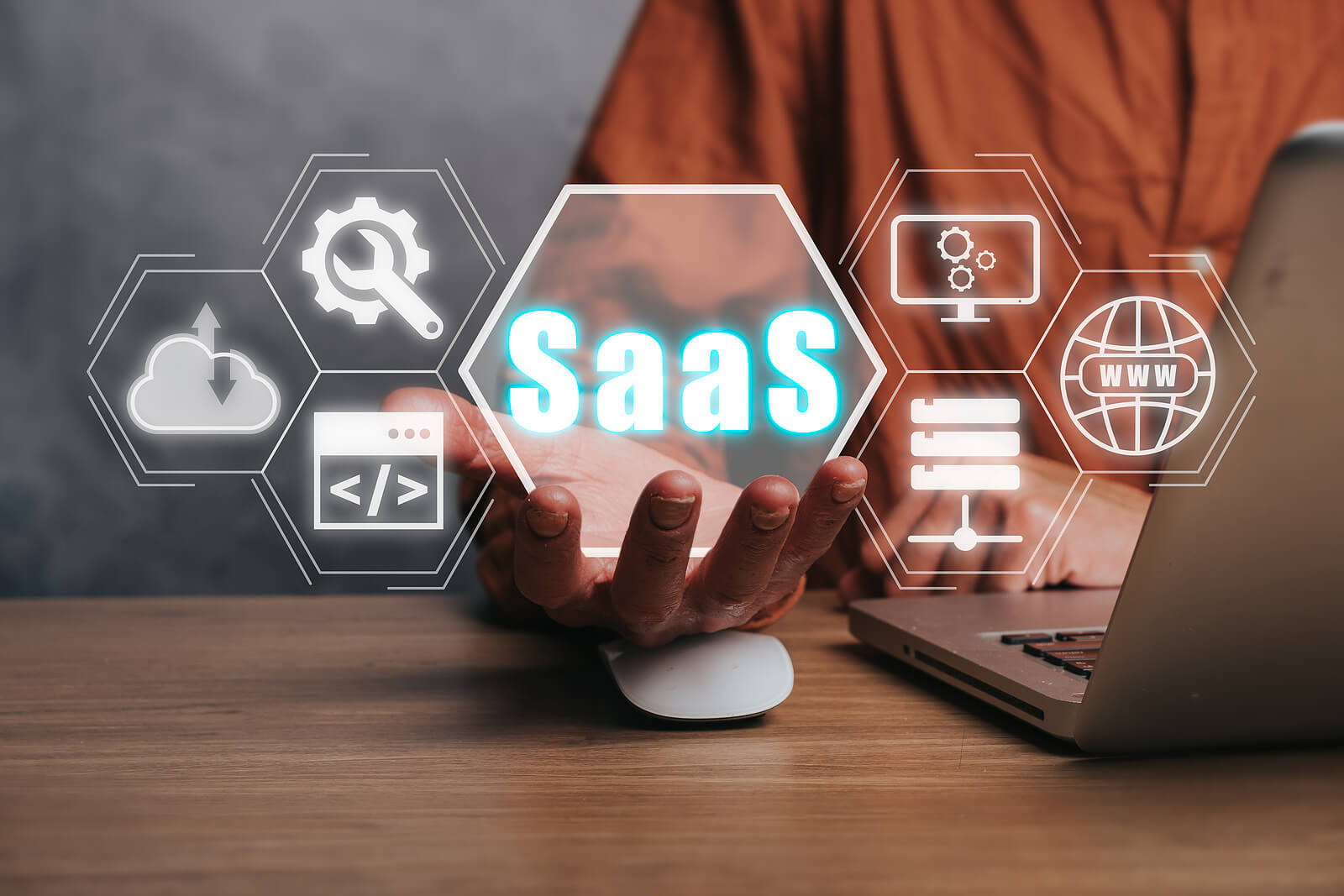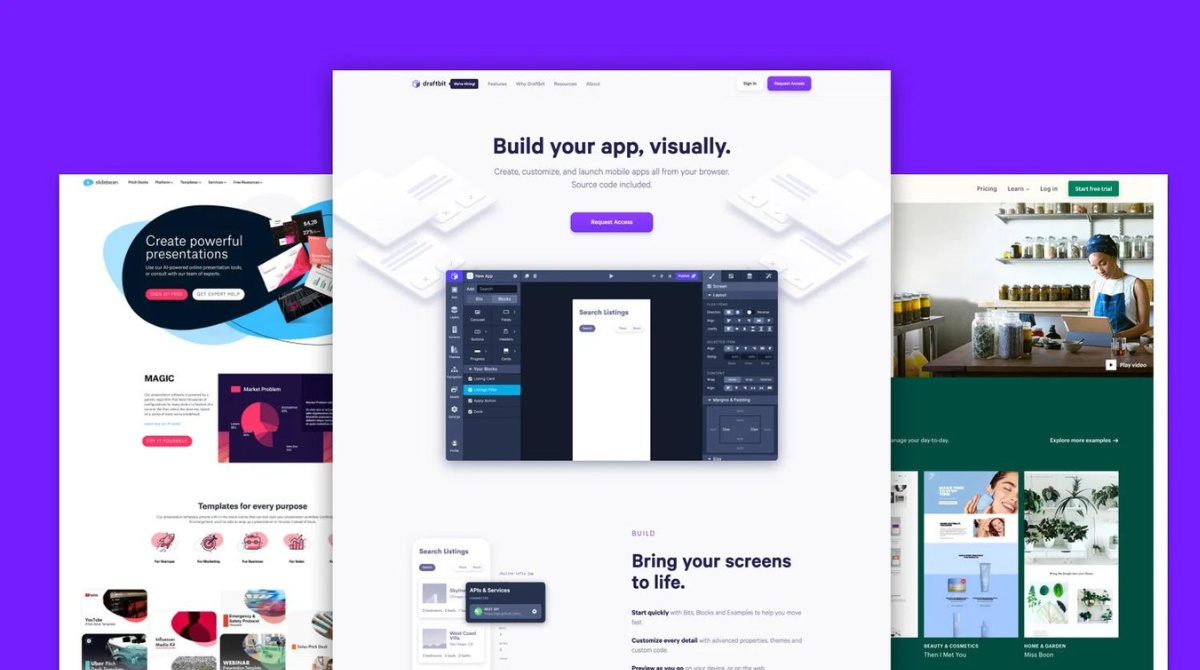Introduction
Welcome to the world of Software as a Service (SaaS) – a booming industry that has revolutionized the way businesses and individuals access software solutions. Whether it’s project management tools, customer relationship management (CRM) software, or accounting systems, SaaS offers a cost-effective and convenient way to access and utilize software through the internet.
Building a successful SaaS business can be a rewarding venture, but it requires careful planning, strategic execution, and a customer-centric approach. In this article, we will explore the key steps involved in building a SaaS business from scratch and provide insights on how to ensure its success.
From choosing the right SaaS idea to scaling and growing your business, this guide will walk you through the essential considerations and strategies needed to create a profitable and sustainable SaaS venture.
Whether you are a seasoned entrepreneur or a first-time founder, this article will provide valuable insights and actionable steps to help you navigate the world of SaaS and build a successful business.
So, let’s dive in and explore the process of building a SaaS business, from inception to growth.
Choosing the Right Software as a Service (SaaS) Idea
When building a SaaS business, one of the most crucial steps is choosing the right idea. Your SaaS idea should solve a specific problem or fulfill a need in the market. But how do you identify the right idea?
First, start by evaluating your own expertise, skills, and interests. What are you passionate about? What industries or niches do you have knowledge or experience in? Identifying an idea that aligns with your interests and strengths will not only make the journey more enjoyable but also increase the likelihood of long-term success.
Next, conduct market research to identify potential gaps and demands. Look for pain points that customers are facing in specific industries. Are there existing software solutions that are not meeting their needs? Can you provide a more efficient or cost-effective solution?
Consider the market size and potential growth of your chosen niche. Is there a large enough target market to support a sustainable business? Research industry reports, market trends, and competitor analysis to gain insights into the market demand and competition.
Additionally, think about the scalability and adaptability of your idea. Can it be expanded or customized to cater to different market segments or industries? Is it a solution that can evolve with changing customer needs and technological advancements?
Lastly, consider the feasibility and financial viability of your SaaS idea. Can you develop and maintain the software solution within your budget? Are there potential revenue streams and monetization opportunities? Evaluate the potential return on investment and the sustainability of the business model.
By carefully evaluating these factors and conducting thorough market research, you can identify a SaaS idea that has the potential for success and addresses a real need in the market. Once you have selected a viable idea, it’s time to move on to the next crucial step – developing a Minimum Viable Product (MVP).
Conducting Market Research
Market research is a critical step in building a successful SaaS business. It helps you understand your target audience, competition, and market dynamics, enabling you to make informed decisions and develop a winning strategy. Here’s how to effectively conduct market research:
Define your target audience: Start by identifying and understanding your ideal customers. Consider their demographics, psychographics, and pain points. What are their needs and preferences? Understanding your target audience will help you tailor your product offerings and marketing messages to resonate with them.
Competitor analysis: Evaluate your direct and indirect competitors. Study their strengths, weaknesses, pricing models, and feature sets. Identify any gaps or opportunities where your SaaS solution can differentiate itself. This analysis will help you position your product effectively in the market.
Customer surveys and interviews: Engage with your target audience to gather insights and feedback. Conduct surveys, interviews, or focus groups to understand their pain points, preferences, and expectations. This direct feedback will give you valuable data to refine your product and marketing strategy.
Industry analysis: Stay up-to-date with industry trends, regulations, and market dynamics. Analyze reports, studies, and industry news to identify emerging opportunities or challenges. Understanding the broader industry landscape will help you make informed decisions and adapt your strategy accordingly.
Validate demand: Validate the demand for your SaaS solution by conducting market tests or pilot programs. This will help you gauge customer interest, refine your product, and gather initial traction. Use analytics and user feedback to continuously improve and optimize your offering.
Pricing research: Determine the optimal pricing strategy for your SaaS offering. Research pricing models in your industry, consider your target audience’s price sensitivity, and test different pricing tiers to find the right balance between value and revenue generation.
Stay updated: Market research is an ongoing process. Continuously monitor changes in customer needs, industry trends, and competitor movements. Stay updated with market research tools, customer feedback, and analytics to adapt your strategy and seize opportunities.
By conducting comprehensive market research, you can gain deep insights into your target audience, competition, and market dynamics. This knowledge will enable you to make informed decisions, refine your product, and position your SaaS business for success.
Developing a Minimum Viable Product (MVP)
After conducting thorough market research and validating your SaaS idea, it’s time to develop a Minimum Viable Product (MVP). The MVP is a scaled-down version of your software solution that focuses on delivering the core functionality and value proposition to your target audience. Here’s how to effectively develop your MVP:
Identify core features: Determine the essential features that will provide the most value to your target audience. Focus on the functionalities that solve their pain points and address the key problem your SaaS solution aims to solve. Keep the MVP scope limited to these core features to ensure efficient development.
Build a prototype: Create a functional prototype of your MVP to visualize the user interface and user experience. This will help you gather feedback and make necessary improvements before investing in full-scale development.
Engage with early adopters: Reach out to early adopters or beta testers who align with your target audience. Provide them access to your MVP and encourage them to provide feedback and suggestions. This early user feedback is invaluable for identifying usability issues, refining features, and gaining insights into user behavior.
Iterate and improve: Use the feedback from early adopters to iterate and improve your MVP. Implement necessary modifications, add new features based on user demand, and fix any usability issues. Continuously iterate and retest to refine your product.
Balance quality and speed: While it is important to prioritize speed to market with your MVP, don’t compromise on quality. Ensure that your MVP is stable, reliable, and user-friendly. Aim for a balance between delivering a functional solution quickly and maintaining high-quality standards.
Develop a product roadmap: Outline a product roadmap that includes future feature enhancements and iterations beyond the MVP. This will help you communicate your long-term vision to stakeholders and ensure that you stay focused on incremental improvements and customer needs.
Consider scalability: Keep scalability in mind during the MVP development phase. Design your solution to be easily scalable as you gain traction and more customers. This will help you avoid technical limitations and ensure a smooth transition to full-scale production.
Measure success indicators: Define key performance indicators (KPIs) to measure the success of your MVP. Track user engagement, conversion rates, and customer feedback to gauge the impact of your solution and make data-driven decisions for future iterations.
Remember, the goal of your MVP is not to have a feature-rich product, but rather to validate your ideas, gather user feedback, and iterate based on market demand. By developing an MVP, you can test your assumptions, refine your product, and ensure that your final solution meets customer needs and preferences.
Building a Strong Team
Building a strong and cohesive team is crucial for the success of your SaaS business. A well-rounded and talented team will not only drive innovation but also ensure efficient execution and a positive work culture. Here are some key aspects to consider when building your team:
Define roles and responsibilities: Clearly define the roles and responsibilities of each team member to ensure clarity and accountability. Identify the key skill sets you need to drive your SaaS business forward and hire individuals who possess those skills.
Look for complementary skills: Build a team with diverse skill sets that complement each other. Look for individuals who bring unique perspectives and expertise to the table. Complementary skill sets will enhance collaboration and lead to well-rounded problem-solving.
Hire passionate individuals: Look for team members who are passionate about your industry and the problem your SaaS solution aims to solve. Passionate individuals will be driven to go the extra mile, contribute innovative ideas, and positively impact the growth of your business.
Promote a positive work culture: Foster a positive and collaborative work culture that promotes creativity, open communication, and personal growth. Encourage teamwork, celebrate achievements, and provide opportunities for professional development. A positive work culture will attract and retain top talent.
Encourage creativity and innovation: Create an environment that fosters creativity and innovation. Encourage team members to think outside the box, experiment, and take calculated risks. Provide opportunities for brainstorming sessions and cross-functional collaboration to fuel innovation.
Support professional growth: Help your team members grow both personally and professionally. Provide mentorship, training programs, and opportunities for skill development. Supporting the professional growth of your team members will not only benefit them but also contribute to the overall growth of your SaaS business.
Build strong communication channels: Establish effective communication channels within your team. Encourage open and honest communication, both within teams and across departments. Regularly hold team meetings, provide feedback, and ensure that everyone is aligned with the company’s vision and goals.
Delegate effectively: Delegate tasks and responsibilities based on individual strengths and expertise. Trust your team members to handle their assigned tasks and empower them to make decisions. Effective delegation will ensure productivity and foster a sense of ownership and autonomy.
Cultivate a customer-centric mindset: Ingrain a customer-centric mindset within your team. Encourage team members to empathize with customers, understand their pain points, and prioritize their needs and satisfaction. A customer-centric team will drive the success and growth of your SaaS business.
Building a strong team is a foundational step in creating a successful SaaS business. Investing in the right talent, fostering a positive work culture, and encouraging creativity and innovation will lay the groundwork for achieving your business goals and delivering a top-notch product to your customers.
Designing a User-Friendly Interface
Designing a user-friendly interface is essential for the success of your SaaS business. A well-designed interface not only enhances the user experience but also drives user engagement and satisfaction. Here are some key considerations to keep in mind when designing your SaaS interface:
Understand your target audience: Gain a deep understanding of your target audience’s preferences, behaviors, and needs. Research their pain points and design your interface to address those specific pain points. Tailor the user experience to meet their expectations and make their interactions with your software intuitive and seamless.
Keep it simple and intuitive: Strive for simplicity in your interface design. Keep the navigation straightforward, minimize clutter, and use clear language and visuals. Make sure the most important features are easily accessible and eliminate any unnecessary steps or complexity.
Create a consistent visual language: Establish a consistent visual language throughout your interface. Use a cohesive color scheme, typography, and visual elements to create a harmonious and unified experience. Consistency will make your interface easier to understand and navigate.
Ensure responsive design: With the increasing use of mobile devices, it is crucial to design a responsive interface. Ensure that your interface adapts seamlessly to various screen sizes and resolutions. Test your interface on different devices to ensure a consistent experience.
Use clear and concise language: Use clear and concise language throughout your interface. Avoid technical jargon or confusing terminology. Use descriptive labels, tooltips, and error messages to guide users and help them understand the functionality of different elements.
Provide visual cues and feedback: Use visual cues such as icons, buttons, and progress indicators to guide users through their interactions. Provide feedback in real-time to let users know when actions are being processed or completed. Visual cues and feedback enhance the user experience and reduce confusion.
Usability testing: Conduct usability testing with a sample of your target audience to identify any areas of improvement in your interface. Gather feedback and observe user behavior to iterate and refine the design. Usability testing will help you uncover usability issues and ensure a user-friendly interface.
Accessibility: Prioritize accessibility in your interface design. Ensure that your interface is usable for individuals with disabilities. Consider factors such as color contrast, keyboard navigation, and screen reader compatibility. Make your SaaS solution inclusive and accessible to a wide range of users.
Stay updated with design trends: Keep up-to-date with the latest design trends and user interface best practices. Monitor industry blogs, attend design conferences, and engage with the design community to stay on top of emerging trends and technologies. Incorporate relevant design trends into your interface to provide a modern and engaging experience.
By focusing on user-centric design principles, simplifying complexity, and continuously refining your interface based on user feedback, you can create a user-friendly interface that enhances the overall user experience and drives user engagement with your SaaS solution.
Creating a Scalable Infrastructure
Creating a scalable infrastructure is vital for the long-term success of your SaaS business. As your user base grows and demands increase, you must ensure that your infrastructure can handle the load and maintain optimal performance. Here are key considerations when creating a scalable infrastructure:
Cloud-based architecture: Embrace a cloud-based infrastructure to take advantage of its scalability and flexibility. Cloud services such as Amazon Web Services (AWS) or Microsoft Azure offer on-demand resources and allow you to scale your infrastructure up or down based on your needs. This eliminates the need for upfront hardware investment.
Distributed system design: Implement a distributed system design that distributes the workload across multiple servers, ensuring high availability and fault tolerance. This design helps prevent single points of failure and allows for seamless scaling as your user base grows.
Automated scaling: Set up systems and processes to automatically scale your infrastructure based on predefined triggers. Monitor key performance indicators like CPU usage, bandwidth, and user traffic to trigger automatic scaling. This ensures that your infrastructure can handle fluctuations in demand without manual intervention.
Use of containerization: Containerization, such as using Docker or Kubernetes, simplifies management and deployment of your software components. Containers enable consistent and reliable deployment across different environments, making scaling and updating your infrastructure more manageable.
Prioritize performance optimization: Continuously monitor and optimize the performance of your infrastructure. Optimize your database queries, caching mechanisms, and network configurations to minimize latency and improve response times. A performant infrastructure is critical for delivering a smooth experience to your users.
Secure your infrastructure: Implement robust security measures to protect your infrastructure and user data. Follow best practices for network security, encryption, and access controls. Regularly conduct security audits and patch vulnerabilities to stay ahead of potential threats.
Monitoring and analytics: Set up comprehensive monitoring and analytics systems to gain visibility into your infrastructure’s performance and user behavior. Monitor key metrics like response times, errors, and user engagement. Use this data to identify bottlenecks, optimize resource allocation, and make data-driven decisions for scaling.
Partner with reliable vendors: If you choose to outsource certain infrastructure components, carefully select reliable vendors. Conduct due diligence, review their track record, and assess their ability to scale and support your business growth. Establish clear service level agreements (SLAs) to ensure their commitment to uptime and performance.
Plan for disaster recovery: Have a disaster recovery plan in place to ensure business continuity in case of unforeseen events. Regularly back up your data, store backups in secure locations, and test your recovery procedures to minimize downtime and data loss.
Building a scalable infrastructure is essential for accommodating growth, maintaining optimal performance, and delivering a seamless experience to your users. By incorporating cloud services, distributing workloads, automating scaling, and prioritizing performance optimization and security, you can create an infrastructure that supports your SaaS business’s expansion and success.
Implementing Effective Marketing Strategies
Implementing effective marketing strategies is key to attracting and acquiring customers for your SaaS business. With the right marketing tactics, you can raise awareness, generate leads, and drive conversions. Here are some important strategies to consider:
Define your target audience: Clearly identify your target audience and create buyer personas to understand their demographics, preferences, and pain points. This will help you tailor your marketing messages and select the most effective channels to reach them.
Create compelling content: Develop high-quality content that provides value to your target audience. Use blog posts, whitepapers, case studies, and videos to showcase your expertise, educate your audience, and build credibility in your industry. Optimize your content for search engines to improve your organic visibility.
Search engine optimization (SEO): Implement SEO best practices to improve your website’s visibility in search engines. Research relevant keywords and incorporate them into your content, meta tags, and URLs. Optimize your website’s loading speed, mobile-friendliness, and overall user experience to enhance search rankings.
Pay-per-click (PPC) advertising: Utilize PPC advertising platforms such as Google Ads or social media advertising to target specific keywords, demographics, or interests. Create compelling ad copy and landing pages to drive traffic and generate leads. Keep a close eye on your campaigns, analyze metrics, and refine your targeting to maximize your ROI.
Social media marketing: Leverage social media platforms to engage with your target audience, build brand awareness, and drive website traffic. Develop a social media strategy that aligns with your goals and target audience. Regularly share valuable content, interact with your followers, and participate in industry discussions to establish your brand as a thought leader.
Email marketing: Build an email list and nurture your leads through targeted email campaigns. Segment your list based on interests or behaviors to deliver personalized content that resonates with your subscribers. Use automated email sequences to onboard new users, share product updates, and nurture customer relationships.
Influencer marketing: Collaborate with influencers in your industry to reach a wider audience and build credibility. Identify influencers who align with your brand values and have a genuine connection with your target audience. Partner with them to create content, share reviews, or host webinars to leverage their reach and influence.
Referral programs: Implement referral programs to incentivize existing customers to refer new customers. Create a simple and rewarding referral process that encourages customers to share their positive experiences with others. Offer incentives such as discounts, free upgrades, or exclusive access to encourage referrals.
Customer testimonials and reviews: Collect and showcase customer testimonials and reviews to build social proof and increase trust. Display testimonials on your website, social media channels, and landing pages. Encourage satisfied customers to leave reviews on relevant platforms, such as third-party review sites or industry directories.
Track and analyze metrics: Implement tracking systems and analytics tools to measure the effectiveness of your marketing efforts. Monitor key metrics such as website traffic, conversions, customer acquisition cost, and customer lifetime value. Analyze data to identify trends, gain insights, and make data-driven decisions to optimize your marketing strategies.
By implementing these effective marketing strategies, you can increase brand visibility, attract qualified leads, and drive conversions for your SaaS business. Continuously test and adapt your marketing tactics to stay ahead of industry trends and ensure long-term success.
Providing Excellent Customer Support
Providing excellent customer support is essential for the success and growth of your SaaS business. By delivering exceptional customer service, you can enhance customer satisfaction, foster loyalty, and drive positive word-of-mouth. Here are key strategies for providing excellent customer support:
Responsive communication: Respond promptly to customer inquiries and issues. Establish clear communication channels, such as email, live chat, or phone support, and ensure that customers receive timely responses. Set realistic response time expectations and strive to exceed them.
Empathetic and personalized approach: Show empathy towards your customers and strive to understand their concerns or frustrations. Treat each customer as an individual and address their specific needs. Customize your support interactions to create a personalized experience that makes customers feel valued.
Active listening: Practice active listening when engaging with customers. Pay attention to their concerns, ask clarifying questions, and paraphrase their feedback to demonstrate understanding. This not only helps resolve issues effectively but also shows customers that their opinions are heard and valued.
Knowledge base and self-service options: Create a comprehensive knowledge base or self-service portal that empowers customers to find answers to common questions or troubleshoot issues on their own. Provide detailed product documentation, tutorials, and frequently asked questions (FAQs) that are easily accessible.
Continuous training and development: Invest in the training and development of your customer support team. Equip them with the necessary product knowledge, problem-solving skills, and communication techniques. Regularly provide updates on new features, best practices, and customer feedback to ensure they stay informed and capable of addressing customer needs.
Post-sales onboarding: Offer onboarding assistance to new customers to ensure they can effectively use your SaaS solution. Provide tutorials, training sessions, or onboarding webinars to familiarize them with your product. Take proactive measures to understand their goals and help them achieve success with your solution.
Proactive customer outreach: Anticipate customer needs and proactively reach out to offer assistance or provide solutions. Contact customers to gather feedback, offer product updates, or remind them of upcoming features or subscription renewals. Proactive outreach demonstrates your dedication to customer success.
Handle complaints and escalations effectively: Deal with customer complaints or escalations promptly and professionally. Address their concerns empathetically, take ownership of the situation, and find appropriate solutions. Strive to turn a negative experience into a positive one and learn from customer feedback to continuously improve.
Measure customer satisfaction: Implement customer satisfaction surveys or Net Promoter Score (NPS) surveys to measure the happiness and loyalty of your customers. Analyze the feedback to identify areas for improvement and address any gaps in customer support. Use customer data to drive continuous improvement initiatives.
Celebrate customer success: Celebrate and showcase the success stories of your customers. Share case studies or testimonials that highlight the impact of your SaaS solution. Recognize and reward loyal customers to demonstrate appreciation and foster a sense of community.
By prioritizing excellent customer support, you can build stronger relationships with your customers, increase customer retention, and drive long-term success for your SaaS business.
Monetizing Your SaaS Business
Monetizing your SaaS business is crucial for generating revenue and ensuring its long-term sustainability. Here are some key strategies to effectively monetize your SaaS offering:
Choose the right pricing model: Select a pricing model that aligns with your target market and value proposition. Common pricing models include monthly or annual subscriptions, freemium (combining free and paid plans), tiered pricing (based on features or usage), or pay-as-you-go pricing. Consider factors such as your target audience’s willingness to pay and the perceived value of your solution.
Offer a free trial or freemium option: Provide a free trial or freemium version of your SaaS product to allow potential customers to experience its value firsthand. This can lead to increased adoption and conversion rates, as users can test the product before committing to a paid plan. Ensure that the free version showcases the value of your product while encouraging users to upgrade to a paid subscription.
Implement upselling and cross-selling: Take advantage of upselling and cross-selling opportunities to increase your average revenue per customer. Identify complementary features or add-ons that customers may find valuable and offer them as upgrade options. Additionally, analyze your customer base to identify potential cross-selling opportunities where customers may benefit from additional products or services you offer.
Consider customization and enterprise plans: For customers with specific needs or larger organizations, offer customized or enterprise-level plans. These plans may include tailored features, dedicated support, or premium services at a higher price point. Enterprise customers often have higher budgets and value solutions that can be customized to fit their unique requirements.
Implement usage-based pricing: If applicable, consider implementing usage-based pricing where customers pay based on their usage or consumption of your SaaS product. This pricing model works well for solutions that offer scalable resources, such as cloud storage or data processing. Metered billing allows customers to align costs with their usage and provides flexibility as their needs fluctuate.
Provide add-on services or premium features: Identify additional services or premium features that can be offered as upsells to customers who require enhanced functionality or specialized support. This could include advanced analytics, priority customer service, integration options with other platforms, or training and consulting services. These add-ons can offer high value and revenue potential.
Implement annual or long-term contracts: Encourage customers to commit to longer billing cycles, such as annual subscriptions or multi-year contracts, by offering discounts or incentives. This provides more predictable revenue streams, reduces churn, and improves customer lifetime value.
Partner with affiliates or resellers: Collaborate with affiliates or resellers who can market and sell your SaaS solution to their networks. Establish a mutually beneficial partnership where they earn commissions or discounts for driving sales. Affiliates and resellers can help expand your reach and access new customer segments.
Continuously assess and adjust pricing: Regularly evaluate and adjust your pricing strategy based on market trends, customer feedback, and your own business goals. Monitor competitors’ pricing strategies, conduct user surveys, and analyze your own metrics to ensure your pricing remains competitive and aligned with the value you provide.
Effective monetization of your SaaS business is critical for generating revenue and sustaining growth. By implementing the right pricing models, offering free trials, exploring upselling opportunities, and continuously evaluating and adjusting your pricing strategy, you can maximize revenue while providing value to your customers.
Scaling and Growing Your SaaS Business
Scaling and growing your SaaS business is crucial for long-term success and increased market share. As your customer base expands, it’s important to scale your operations, optimize processes, and continuously drive growth. Here are key strategies for scaling and growing your SaaS business:
Invest in infrastructure: Continually invest in your infrastructure to ensure it can handle increased demand and maintain optimal performance. Scale your servers, databases, and networks to accommodate growing user traffic and data processing requirements. Embrace cloud-based solutions that offer scalability and flexibility.
Expand your target market: Identify new market segments or industries where your SaaS solution can provide value. Adapt your marketing strategies and product positioning to cater to these new markets. Conduct market research to understand the needs, pain points, and preferences of potential customers in these segments.
Continuously improve your product: Listen to user feedback, monitor market trends, and conduct regular product updates to ensure your SaaS solution remains competitive and aligned with customer needs. Develop new features, enhance existing functionality, and stay ahead of technological advancements. Implement an agile development approach to quickly respond to user demands.
Expand service offerings: Consider expanding your service offerings to provide a more comprehensive solution. Identify complementary services or features that can be bundled with your SaaS product. This can increase your value proposition and revenue potential while improving customer satisfaction and retention.
Build strategic partnerships: Collaborate with other businesses, organizations, or technology providers through strategic partnerships. Leverage their resources, expertise, and customer base to expand your reach and access new markets. Joint marketing campaigns, integrations, or co-branded initiatives can drive mutual growth and improve brand exposure.
Invest in customer success: Prioritize customer success to drive customer retention and advocacy. Establish a dedicated customer success team that focuses on onboarding, engagement, and customer satisfaction. Offer proactive support, training resources, and regular check-ins to ensure customers achieve their desired outcomes and maximize value from your SaaS solution.
Explore international markets: Look for opportunities to expand into international markets. Research local regulations, cultural nuances, and market demands. Adapt your marketing messages and support resources to resonate with international customers. Localize your product interface, documentation, and customer support to provide a seamless experience in different regions.
Optimize your sales funnel: Continuously analyze and optimize your sales funnel to increase conversion rates. Identify potential bottlenecks or drop-off points in the customer journey and address them through improved messaging, user experience, or pricing strategies. Implement lead nurturing campaigns to engage with potential customers and convert them into paying customers.
Maintain a strong company culture: As you scale, it’s crucial to maintain a strong company culture. Foster a positive work environment, ensure clear communication, and provide opportunities for career growth. Hire and retain top talent that aligns with your company values and fosters a collaborative and innovative atmosphere.
Monitor metrics and iterate: Continuously monitor key performance indicators (KPIs) to track your progress and identify areas for improvement. Analyze metrics such as customer acquisition cost (CAC), customer lifetime value (CLTV), churn rate, and revenue growth. Use data-driven insights to iterate on your strategies and make informed decisions for scaling your SaaS business.
Scaling and growing your SaaS business requires a strategic approach and relentless focus on customer value, product innovation, and operational efficiency. By investing in infrastructure, expanding your market reach, nurturing customer success, and continuously optimizing your processes, you can successfully scale and propel your SaaS business to new heights.
Conclusion
Building and growing a successful SaaS business requires careful planning, strategic execution, and a customer-centric approach. By following the key steps outlined in this guide, you can navigate the challenges and capitalize on the vast opportunities in the SaaS industry. From choosing the right SaaS idea to scaling and growing your business, each step plays a crucial role in your journey to success.
Start by choosing a SaaS idea that solves a specific problem or fulfills a need in the market. Conduct thorough market research to identify your target audience, understand competitor landscapes, and validate demand. Develop a Minimum Viable Product (MVP) to test your solution, gather user feedback, and iterate based on market demand.
Building a strong team is essential for driving innovation, efficient execution, and maintaining a positive work culture. Design a user-friendly interface that enhances the user experience and drives engagement. Create a scalable infrastructure that can handle increased demand and maintain optimal performance as your customer base grows.
Implement effective marketing strategies to raise awareness, drive traffic, and convert leads into paying customers. Provide excellent customer support to foster loyalty, satisfaction, and positive word-of-mouth. Monetize your SaaS business through strategic pricing models, upselling, and cross-selling.
Finally, scale and grow your SaaS business by investing in infrastructure, expanding your target market, and continuously improving your product and services. Optimize your sales funnel, analyze metrics, and iterate your strategies to drive ongoing growth.
Remember, building a successful SaaS business is not an overnight process. It requires dedication, adaptability, and a commitment to delivering value to your customers. Stay proactive, embrace innovation, and continuously listen and respond to customer needs and market trends.
By following these steps and maintaining a customer-centric mindset, you can position your SaaS business for long-term success in a rapidly evolving industry.

























